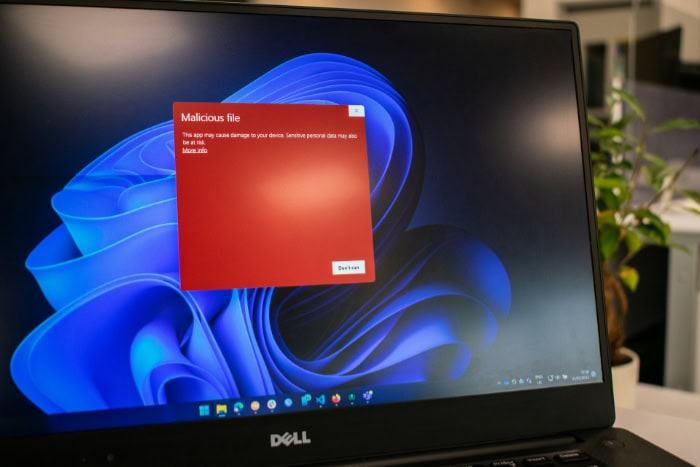Why You Should Stop Buying Antivirus Software

Millions of computer users spend money on antivirus software each year, believing it's essential for their digital safety. Yet, modern operating systems have evolved significantly, offering robust security features that make standalone antivirus programs largely redundant.
Both Windows and macOS now include sophisticated protection mechanisms that safeguard against malware, ransomware, and various cyber threats.
Traditional viruses, which once posed the primary threat to computers, have given way to more complex security challenges. Today's cybersecurity landscape requires a different approach – one that focuses on user behavior, system maintenance, and built-in security tools rather than expensive third-party solutions.
Built-in Protection Capabilities
Modern operating systems come equipped with powerful security features that provide comprehensive protection against various threats. These built-in tools have matured significantly over the years, offering capabilities that rival or exceed those of paid antivirus solutions.
Windows Defender Evolution
Microsoft's Windows Defender has transformed from a basic antimalware tool into a complete security suite. The current version, Microsoft Defender, provides real-time protection that actively monitors your system for potential threats.
It scans files, downloads, and programs automatically, identifying and blocking malicious software before it can harm your computer.
The cloud-delivered protection feature enables Windows Defender to respond rapidly to new threats. By connecting to Microsoft's security network, your computer receives immediate updates about emerging malware and attack patterns.
This proactive approach allows the system to identify and block new threats even before traditional virus definition updates are released.
Windows Defender's integration with the Windows ecosystem creates a seamless security experience.
It works harmoniously with other Windows security features, including controlled folder access, which prevents ransomware from encrypting your files, and exploit protection that guards against various attack techniques.
The SmartScreen filter adds another layer of security by checking downloads and websites against Microsoft's reputation database.
macOS Security Framework
Apple's approach to security centers on multiple layers of protection working together. XProtect, the built-in antimalware system, silently operates in the background, checking every downloaded file against a database of known malware.
It updates automatically, ensuring protection against the latest threats without requiring user intervention.
Gatekeeper serves as a powerful gatekeeper for software installation, verifying that apps come from approved developers and haven't been tampered with. It requires explicit user approval before running downloaded software, preventing unauthorized applications from launching.
This system effectively blocks malware that attempts to disguise itself as legitimate software.
System Integrity Protection (SIP) prevents potentially malicious software from modifying critical system files and processes.
This technology restricts access to vital system components, even with administrative privileges, creating a robust barrier against rootkits and other sophisticated malware.
App sandboxing represents another crucial security feature in macOS. Each application runs in its own isolated environment, limiting its access to system resources and other applications' data.
If malware manages to infiltrate one application, sandboxing prevents it from spreading to other parts of the system or accessing sensitive information outside its designated space.
Modern Security Threats

Security threats have evolved dramatically from the simple computer viruses of the past. Today's cybersecurity challenges present complex, sophisticated attacks that target both technical vulnerabilities and human behavior.
These modern threats require a different approach to protection that goes beyond traditional antivirus solutions.
Current Attack Vectors
Social engineering has emerged as one of the most prevalent attack methods used by cybercriminals. These attacks manipulate people into revealing confidential information or performing actions that compromise security.
Phishing emails, for example, impersonate legitimate organizations to steal login credentials or financial information. These attacks bypass traditional antivirus software completely since they rely on human psychology rather than malicious code.
Ransomware continues to pose a significant threat to both individuals and organizations. These attacks encrypt valuable files and demand payment for their release.
Modern ransomware often uses sophisticated encryption techniques and can spread through legitimate-looking software updates or email attachments.
The damage from ransomware can be devastating, with victims losing access to important documents, photos, and other personal data.
Zero-day exploits represent another serious threat that traditional security measures struggle to combat. These attacks target previously unknown vulnerabilities in software or operating systems before developers can create patches.
Cybercriminals can use these vulnerabilities to gain unauthorized access to systems, steal data, or install malware. The time between discovering a vulnerability and developing a fix creates a window of opportunity for attackers.
Why Traditional Antivirus Falls Short
Traditional antivirus software relies heavily on signature-based detection, which compares files against a database of known malware signatures. This approach proves inadequate against modern threats that use polymorphic code, which changes its signature to avoid detection.
Additionally, new malware variants appear so rapidly that signature databases cannot keep up, leaving systems vulnerable to novel threats.
Performance overhead represents another significant drawback of traditional antivirus software. These programs often consume substantial system resources while running constant background scans.
This can result in slower computer performance, delayed startup times, and reduced battery life on laptops. Users frequently notice their computers becoming sluggish after installing antivirus software, leading to a frustrating computing experience.
False positives and system conflicts create additional problems for users of traditional antivirus software. These programs sometimes flag legitimate files or programs as malicious, preventing users from accessing important resources.
System conflicts can occur when antivirus software interferes with other applications or operating system functions, leading to crashes, freezes, or other stability issues.
Cost-Benefit Analysis

Evaluating the true cost of antivirus software extends beyond the initial purchase price. Users must consider both direct financial impacts and indirect costs related to system resources and performance.
Financial Considerations
Antivirus software subscriptions typically range from $30 to $100 annually for a single device. Premium packages, which often include additional features like VPN services or password managers, can cost substantially more.
Multi-device licenses for families or small businesses might exceed $150 per year. These recurring costs add up significantly over time, especially considering that many included features duplicate functionality already present in modern operating systems.
Many antivirus companies employ aggressive marketing tactics and hidden fees that inflate the total cost. Auto-renewal policies often activate at higher prices than the initial subscription, catching users off guard.
Companies frequently use promotional pricing that increases substantially after the first year. Some vendors also engage in persistent upselling, pushing unnecessary add-ons through pop-up notifications and emails.
Free alternatives, particularly built-in security tools, provide comparable or superior protection without these financial burdens. Windows Defender and macOS security features receive regular updates and improvements at no additional cost.
These built-in solutions integrate seamlessly with their respective operating systems, eliminating the need for paid third-party options.
Resource Impact
Antivirus software can significantly affect system performance through continuous background scanning and real-time monitoring. These programs often launch automatically at startup, extending boot times and creating noticeable delays in system responsiveness.
Memory usage presents another substantial concern. Modern antivirus programs commonly consume 200-500 MB of RAM during normal operation, with usage spikes during scans or updates.
This memory consumption can severely impact performance on computers with limited RAM, forcing the system to rely more heavily on slower virtual memory. The situation becomes particularly problematic when running multiple applications simultaneously.
Battery life deterioration on laptops represents a hidden cost of running antivirus software. Continuous background processes and regular scanning operations increase CPU usage, leading to faster battery drain.
Users might notice their laptops running hotter and requiring more frequent charging. This impact becomes especially noticeable during intensive tasks or while traveling without easy access to power outlets.
Essential Security Practices

Maintaining strong computer security depends more on user behavior and preventive measures than on antivirus software alone. By implementing robust authentication methods and following safe computing practices, users can significantly reduce their exposure to cyber threats and maintain a secure computing environment.
Authentication Methods
Strong password policies form the foundation of effective digital security. Creating unique, complex passwords for each account prevents criminals from gaining access to multiple services if one password becomes compromised.
A strong password contains at least 12 characters, mixing uppercase and lowercase letters, numbers, and special symbols. Password managers built into modern browsers can generate and store these complex passwords securely.
Two-factor authentication adds an essential extra layer of security beyond passwords. This system requires users to verify their identity through a second method, typically a code sent to their phone or generated by an authenticator app.
Even if attackers obtain a password, they cannot access accounts without this secondary verification. Most major online services now offer this feature, and enabling it dramatically improves account security.
Biometric security has become increasingly accessible through fingerprint readers and facial recognition systems built into modern devices. These methods provide both convenience and security, as biological characteristics are extremely difficult to replicate.
Many smartphones, laptops, and tablets now include sophisticated biometric sensors that integrate seamlessly with operating system security features.
Safe Computing Habits
Regular system updates play a crucial role in maintaining security. Operating systems and applications frequently release patches that fix security vulnerabilities.
Enabling automatic updates ensures these fixes are applied promptly, closing potential entry points for attackers. Both Windows and macOS include built-in update mechanisms that handle this process efficiently.
Backup strategies protect against data loss from hardware failure, ransomware, or accidental deletion. Modern operating systems provide built-in backup tools like Windows File History and macOS Time Machine.
Creating multiple backups, including at least one offline copy, ensures data recovery remains possible even after a security incident.
Cloud storage services offer additional protection by automatically syncing important files to secure remote servers.
Download source verification prevents the installation of malicious software disguised as legitimate applications. Users should obtain software only from official sources such as the Microsoft Store, Apple App Store, or developers' verified websites.
Browser extensions and plugins deserve particular scrutiny, as malicious add-ons can compromise security and privacy. Built-in app stores provide curated, pre-screened software that minimizes the risk of installing harmful programs.
The practice of safe browsing habits extends beyond software downloads. Users should pay attention to website security indicators, such as the padlock icon in the address bar, particularly when entering sensitive information.
Email attachments require careful consideration, even when they appear to come from known contacts. Built-in email filters and browser security features help identify suspicious content, but user vigilance remains essential.
Alternative Security Solutions

Modern computing platforms offer numerous built-in and free security tools that provide robust protection without the need for paid antivirus software. These solutions combine local security features with cloud-based protections to create a comprehensive security environment that adapts to new threats.
Free Security Tools
Built-in firewalls serve as the first line of defense against network-based attacks. Windows Firewall and macOS's application firewall monitor network traffic, blocking suspicious connections and controlling which applications can access the internet.
These tools allow users to create custom rules for specific applications and protocols, providing granular control over network security.
Browser security features have become increasingly sophisticated, offering protection against malicious websites, downloads, and phishing attempts. Chrome, Firefox, Safari, and Edge include robust security tools that check downloaded files for malware and warn users about dangerous websites.
These browsers maintain regularly updated lists of known malicious sites and automatically block potentially harmful content.
Email filtering systems built into popular email services like Gmail and Outlook effectively combat spam and phishing attempts. These filters use advanced algorithms to detect suspicious patterns, dangerous attachments, and fraudulent sender addresses.
Many email providers also offer anti-spoofing protection through protocols like SPF and DKIM, preventing attackers from impersonating legitimate senders.
Cloud Security
Online storage protection has evolved significantly, with services like OneDrive, iCloud, and Google Drive offering built-in security features. These platforms encrypt data both during transmission and storage, protecting files from unauthorized access.
Version history and file recovery options provide additional protection against ransomware by allowing users to restore previous versions of compromised files.
Web-based threat detection operates continuously through cloud services, identifying and blocking new security threats as they emerge.
Microsoft's SmartScreen and Google's Safe Browsing API protect users across multiple devices by maintaining vast databases of malicious URLs and downloading patterns.
These services process millions of URLs daily, providing real-time protection against newly discovered threats.
Automatic updates and patches through cloud services ensure that security features remain current without user intervention. Operating systems and applications can now receive security updates seamlessly through cloud distribution networks, closing vulnerabilities quickly.
This automated approach eliminates the delay between threat discovery and protection deployment, reducing the window of opportunity for attackers.
Conclusion
Modern operating systems provide robust security features that eliminate the need for paid antivirus software. Built-in protections like Windows Defender and macOS security tools offer comprehensive safeguards against current threats, while consuming fewer system resources than third-party alternatives.
Combined with smart computing practices, such as strong passwords, two-factor authentication, and regular updates, users can maintain excellent security without additional expenses.
Free security tools and cloud-based protections further strengthen device safety through real-time threat detection and automated responses. Rather than spending money on antivirus subscriptions, users should focus on utilizing existing security features and developing good digital habits.
Following recommended security practices and leveraging built-in protections creates a strong defense against modern cyber threats, making paid antivirus software an unnecessary expense for most users.


